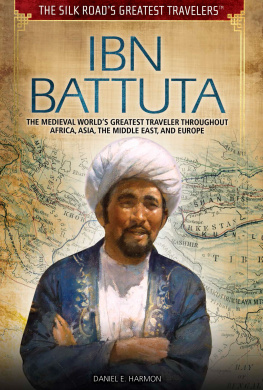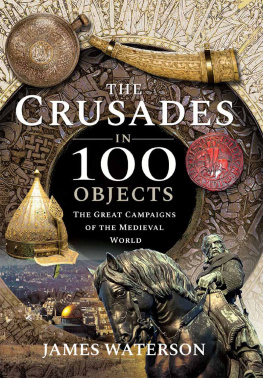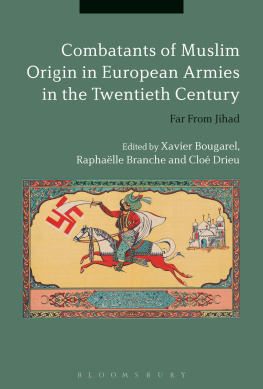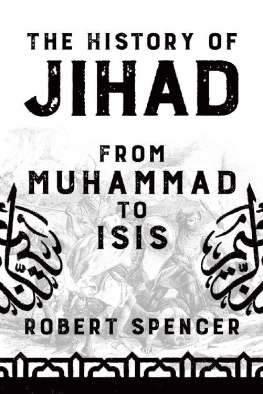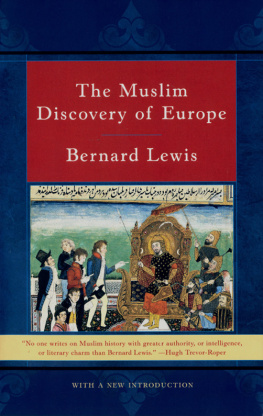William R. Polk - Crusade and Jihad: The Thousand-Year War Between the Muslim World and the Global North
Here you can read online William R. Polk - Crusade and Jihad: The Thousand-Year War Between the Muslim World and the Global North full text of the book (entire story) in english for free. Download pdf and epub, get meaning, cover and reviews about this ebook. year: 2018, publisher: Yale University Press, genre: Religion. Description of the work, (preface) as well as reviews are available. Best literature library LitArk.com created for fans of good reading and offers a wide selection of genres:
Romance novel
Science fiction
Adventure
Detective
Science
History
Home and family
Prose
Art
Politics
Computer
Non-fiction
Religion
Business
Children
Humor
Choose a favorite category and find really read worthwhile books. Enjoy immersion in the world of imagination, feel the emotions of the characters or learn something new for yourself, make an fascinating discovery.

- Book:Crusade and Jihad: The Thousand-Year War Between the Muslim World and the Global North
- Author:
- Publisher:Yale University Press
- Genre:
- Year:2018
- Rating:5 / 5
- Favourites:Add to favourites
- Your mark:
Crusade and Jihad: The Thousand-Year War Between the Muslim World and the Global North: summary, description and annotation
We offer to read an annotation, description, summary or preface (depends on what the author of the book "Crusade and Jihad: The Thousand-Year War Between the Muslim World and the Global North" wrote himself). If you haven't found the necessary information about the book — write in the comments, we will try to find it.
Crusade and Jihad is the first book to encompass, in one volume, the entire history of the catastrophic encounter between the Global NorthChina, Russia, Europe, Britain, and Americaand Muslim societies from Central Asia to West Africa. William R. Polk draws on more than half a century of experience as a historian, policy planner, diplomat, peace negotiator, and businessman to explain the deep hostilities between the Muslim world and the Global North and show how they grew over the centuries.
Polk shows how Islam arose and spread across North Africa into Europe, climaxed in the vibrant and sophisticated caliphate of al-Andalus in medieval Spain, and was the bright light in a European Dark Age. Simultaneously, Islam spread from the Middle East into Africa, India, and Southeast Asia. But following the Mongol invasions, Islamic civilization entered a decline while Europe began its overseas expansion. Portuguese buccaneers dominated the Indian Ocean; the Dutch and the English established powerful corporations that turned India and Indonesia into colonies; Russian armies pushed down the Volga into Central Asia, destroying its city-states; and the Chinese Qing dynasty slaughtered an entire Central Asian people. Britain crushed local industry and drained off wealth throughout its vast colonies. Defeated at every turn, Muslims tried adopting Western dress, organizing Westernstyle armies, and embracing Western ideas.
None of these efforts stopped the conquests. For Europe and Russia, the nineteenth century was an age of colonial expansion, but for the Muslim world it was an age of brutal and humiliating defeat. Millions were driven from their homes, starved, or killed, and their culture and religion came under a century-long assault.
In the twentieth century, brutalized and and disorganized native societies, even after winning independence, fell victim to post-imperial malaise, typified by native tyrannies, corruption, and massive poverty. The result was a furious blowback.
A sobering, scrupulous, and frank account of imperialism, colonialism, insurgency, and terrorism, Crusade and Jihad is history for anyone who wishes to understand the civilizational conflicts of todays world.
William R. Polk: author's other books
Who wrote Crusade and Jihad: The Thousand-Year War Between the Muslim World and the Global North? Find out the surname, the name of the author of the book and a list of all author's works by series.

